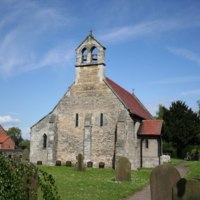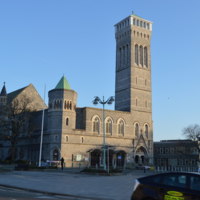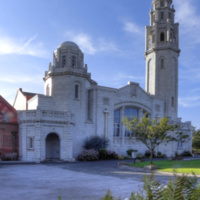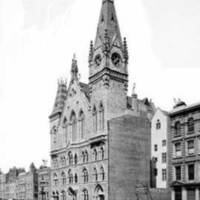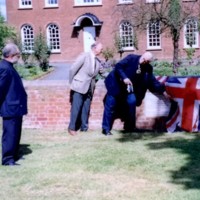Item List (7)
- Tags: stained glass
Washington Memorial Window, All Saint’s Church (Maldon, 1928)
Laurence Washington, who died in Maldon, Essex in 1652, was the great-great grandfather of George Washington. In 1924, Malden, Massachusetts was celebrating its 275th anniversary. Isaac Lothian Seymour, vicar of Maldon back in the ‘Old World’, was…
Type: Monument
Plaque and window, The Church of St Helena (Austerfield, 1955 and 1990s)
William Bradford, the second (and arguably most famous) governor of the Plymouth Colony, was born in Austerfield and baptised in this small Norman-origins church in 1589. By the final decade of the nineteenth century, when interest in the Pilgrim…
Type: Plaque
Mayflower window, Plymouth Guildhall (Plymouth, 1874)
The Plymouth Guildhall, today Grade II listed, was built in 1874 in a Gothic revival style. Part of the new building was a series of fourteen windows that told the local history of Plymouth in connection with the national story of Britain. These…
Type: Monument
Tags: Civic pride, nonconformity, stained glass
James Russell Lowell memorial window (London, 1893), Westminster Abbey Chapter House
The Westminster Abbey Chapter House was completed in 1255 as part of Henry III’s rebuilding of the abbey. Following the dissolution of the monasteries in the 1530s, the Benedictine monks left; until 1863 this ornate building was used as a meeting…
Type: Monument
Mayflower window, Fairhaven Congregational Church (Lytham 1912)
The Fairhaven Congregational Church was opened in 1912, perhaps the peak period for Congregationalism in Britain. Known locally as ‘the White Church’ for good reason, its tall tower and three domes are built in a striking Byzantine style. But, as the…
Type: Monument
Tags: John Robinson, nonconformity, stained glass
Mayflower window, Congregational Hall (Farringdon, 1875)
Congregationalism was a growing nonconformist denomination in the Victorian period, and one that increasingly liked to trace itself directly back to the Pilgrim Fathers (see, for example, the Pilgrim Father's Memorial Church built in the 1860s). In…
Type: Monument
Tags: nonconformity, stained glass
Christopher Martin plaque, St Mary Magdalen (Great Burstead, 1995)
Several passengers on the Mayflower came from Essex. Christopher Martin, who was originally the governor of the leaky Speedwell, was at one time a churchwarden in Great Burstead – though went on to get himself in trouble for dissenting from the…
Type: Plaque


